The Feathered Serpent and the Equinox
Watching the shadow of the serpent descend the stairs of the Castillo in Chichen Itza - Issue # 45
It wasn’t my first time at Chichen Itza when I saw the serpent’s shadow mark the equinox. And I wasn’t the first one to notice it when my family stood in the empty plaza, looking for it. But the spectacle was unforgettable! And we didn’t even need to battle crowds to see it.
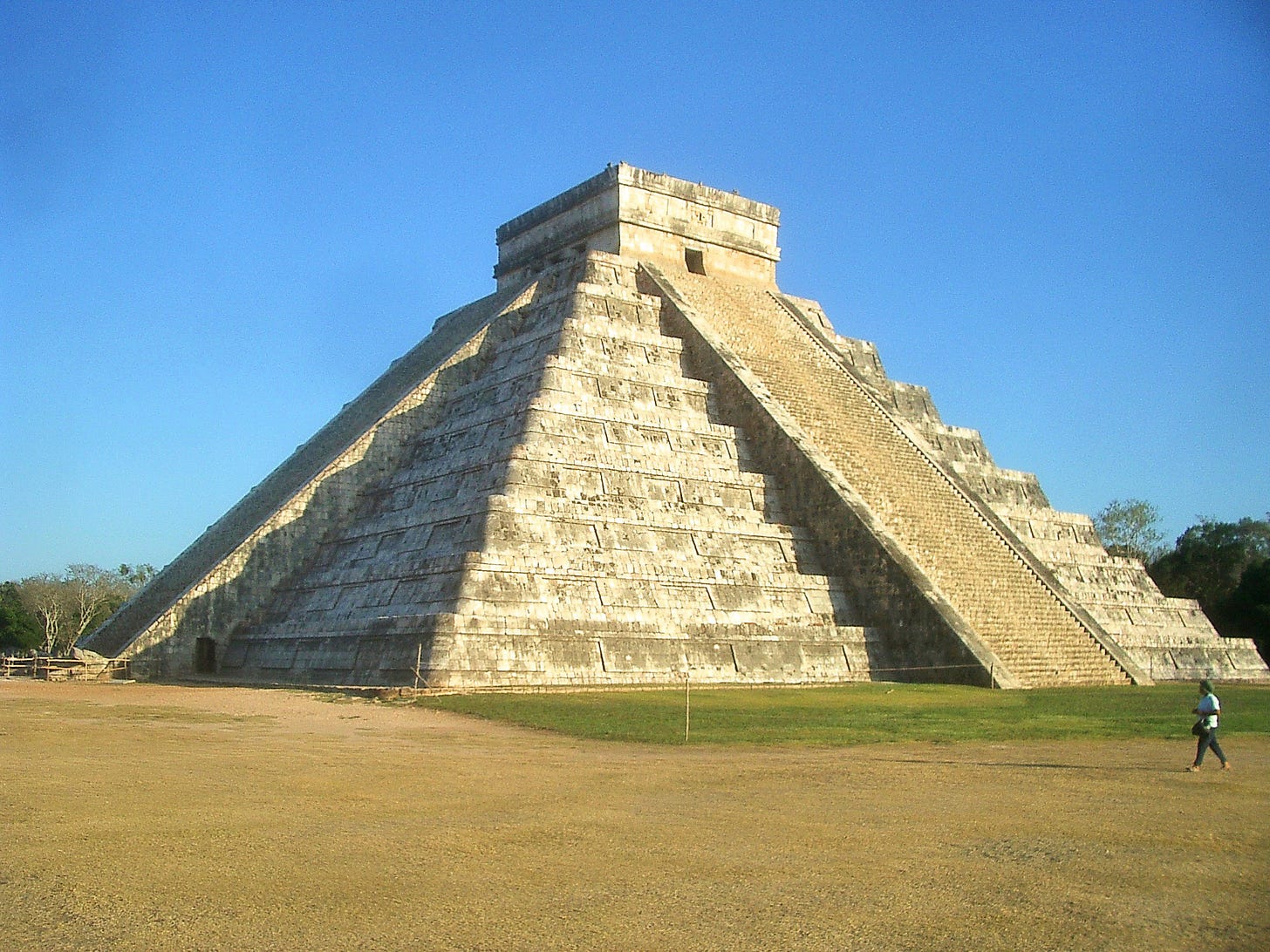
Dear Reader,
Since today is the time of the spring equinox, I thought appropriate to publish the story of how my family saw the shadow of the mythical feathered serpent, Kukulcan, descending the stairs of the Castillo of Chichen Itza.
It was spring of 2006 when my family revisited the Yucatan once again. Our two older kids were in elementary school, our youngest a baby. Since we were a pretty large family by then, when we visited Chichen Itza, we stayed in the Hacienda Chichen. It was the first time we did; usually we stayed in a hotel in Piste, the closest town to the ruins. But this time, it made sense to stay at the Hacienda, where we had a larger room, and we were closer to the back entrance to the ruins.
By then, Chichen Itza had become a huge tourist destination, with limited parking spots and long waits at the front gate. However, the Hacienda, once home to archaeologists working at the site, was close to the back entrance only few people knew about. We could walk to it from our room, and enter without a long wait - especially important for us with the three kids.
Besides, we always wanted to see the hacienda for its historical value.
One of the first haciendas established in Yucatán, it stood in ruins after the Caste War. In 1894, Edward Herbert Thompson, U.S. consul in Yucatán, bought the Hacienda Chichén along with the archaeological site. He restored the hacienda, and used it as living quarters while he excavated, explored, and exported goods from the site to the Peabody Museum. In 1926, the Mexican government charged Thompson with trafficking antiquities and seized Hacienda Chichén. After Thompson's death, the Mexican government dropped the charges and returned the property to his heirs. However, they had no need for it and sold it to Fernando Barbachano Peon, a grandnephew of a former Yucatán Governor, who eventually turned it into a hotel and hosted the first scientific exploration by the Carnegie Institution led by Sylvanus Morley.
Staying at the Hacienda Chichen gave us an opportunity to explore its premises while feeling part of history, staying in rooms where famous archaeologists once stayed while working at the site.
Since the kids were in school, we timed our trips around their vacations, and this particular year, their spring break was early April, less than ten days after the spring equinox.
An amateur astronomer and avid student of the ancient Maya, Jeff knew we should be able to see the serpent’s shadow up to two weeks after the equinox, if we knew the time to look for it.
So, he booked our Chichen stay as close to the equinox as possible. To be fair, we also got lucky the ruins were still open when the phenomenon happened.
Our stay at the hacienda was one of the highlights of our trip - until we saw Kukulcan’s shadow. We had our own cottage, with a palapa roof and a porch with a hammock and chairs. Two pools on the premises also meant a great time for our kids. In fact, we spent all day at the pool and hotel, and didn't go to the ruins during the Chichen Itza rush-hours.
After an early dinner, about half an hour before they closed the site, we walked over.
No one was lined up to enter at the back gate so late in the day. The man at the ticket booth shook his head when he saw us.
“We are closing soon. You have little time,” he said.
“We know; it’s ok,” I answered, and pulled out the money to pay.
Looking at the kids, he waved us in.
“Not enough time to visit everything. Don’t pay. But you need to be fast,” he added.
We’ve been at the site several times by then, and we knew every structure, every turn. This time, we only wanted to see the Pyramid of Kukulcan at sunset. We were hoping to see the shadow of the serpent descending the stairs.
We weren’t sure the famous phenomenon would happen before the site closed, but walked over to the Castillo anyway.
The Pyramid of Kukulcan is impressive, no matter how you look at it. Sitting in the center of the vast main plaza, it dominates the ancient city. As was customary for the ancient Maya, they built it on top of an older pyramid, which encased an even older one, all built on top of a cenote.
The Maya considered certain locations sacred, and they built their most important structures there. They never tore down an old pyramid or temple, but encased it in a newer one as it was. That’s how we ended up with gorgeous, well-preserved structures, even after the top layers crumbled over the centuries.
But in Chichen Itza’s case, nothing crumbled, at least not enough to fall apart. And when they discovered the pyramid, the old archaeologists reconstructed it. They kept a narrow stairway leading into the pyramid open; We used to take guided tours inside and see the older structure.
The kids never got to do this, but I still remember how dark and hot it was inside, as we climbed the stairs in the belly of the pyramid. Once on top, behind a mesh, I glimpsed a jaguar throne, and beside it, the Chac Mool figure.
We didn’t get to go inside this time. They stopped the tours a few years back. We weren’t planning on it, anyway. Watching the larger pyramid, built on top, was enough.
Years ago, I climbed the Castillo, stood on top and walked into the temple. It was a great experience. It still saddens me that my kids didn’t get to do it.
They closed it down the year I would let my son climb it. The previous year, he begged me, but I thought he was too young. We would come back, I assured him, when he would be older. We went back the following year, and he was looking forward to climbing the structure. None of us expected the rope that stopped us from getting close. Now you can’t enter it, you can’t climb on it… but you can still admire it - from a distance.
The pyramid we see today dates from between the 9th and 12th centuries, the Post-classic period of the Ancient Maya civilization. It was a temple dedicated to Kukulcan, the feathered serpent of the Itza people.
Built using square terraces, the pyramid is symmetrical, with four stairways leading to the top. If you’d count the stairs leading to the temple on top, you’d realize that there are 91 of them on each of the four sides. 91×4=364, and adding the one step that leads into the temple, makes 365 steps by the time you enter it. This corresponds to the number of days in a solar year, Haab year as the Maya called it.
Sculptures of Kukulcan decorate the sides of the four stairways.
Adding to this architecture is the spectacle of the serpent’s shadow descending during the equinoxes.
We were standing in front of the pyramid, trying to see a serpent in its shadows. The sun was setting, and we had to leave soon, but I saw nothing interesting. I didn’t mind the walk, but looking around, I doubted we would see anything we hadn’t seen before. No one was there, waiting for the famous phenomenon; the last vendors at the site were packing up their fare.
I turned to leave, telling the kids the site was closing, when I heard my daughter ask,
“Is that it?”
I looked back and noticed it, too.
The sun’s setting rays illuminated the north side of the stairs, forming a series of interconnecting triangles, and the head of the serpent on the bottom. With a bit of imagination, it looked like a huge snake laying on the stairway.
As we were watching it, we noticed it getting thinner and thinner, until the top fragment disappeared. By then, the next part was thin until that one also disappeared. The same thing happened to all the other triangles. At some point, all we saw was a narrow line running down a few steps to the bottom. At last, it all disappeared, except the huge serpent's head at the base, still illuminated by the last rays of the setting sun. Finally, as the sun set, even the head disappeared into the shadow.
It all lasted for about twenty minutes. As the triangles disappeared, they created the illusion of the serpent crawling down the stairs. It was a show I’ll always remember.
Why the shadow of the Feathered Serpent, Kukulcan?
Kukulcan was one of the main gods of the Itza people, one of their creators. Like most ancient people, the Maya had more than one creator god. Kukulcan was special because he had both a human form and one of a feathered serpent.
In earlier Maya traditions, he was the War Serpent, and later the Vision Serpent, who helped the rulers connect to the Divine World. But by the time the Itza adopted him, his cult became similar to the Aztec’s Plumed Serpent, Quetzalcoatl. He became the head of a pantheon of deities of mixed Maya and non-Maya origins. He was the Sky God and the most powerful of the Maya deities.
In Yucatan, they mix references to Kukulcan as the Plumed Serpent with those of Kukulcan as a human figure. He might have been a ruler of Chichen Itza named after the god.
The Maya people in Yucatan still tell folk stories about Kukulcan. According to my favorite version, Kukulcan was a boy born as a snake. As he grew, he turned into a feathered serpent and needed to hide. He moved into a cave, away from people. The only person who saw him was his sister, who cared for him. At least as long as she could. Eventually, Kukulcan grew so big that his sister could not feed him. That’s when he flew out into the sea, causing an earthquake as he left.
Other versions talk about Kukulcan as a winged serpent, telling stories about him flying up to the Sun or flying ahead of Chaak, the Rain God, helping to predict or bring rain.
No matter what version we go with, the Feathered Serpent, Kukulcan, has many representations through Chichen Itza, proving that he was an important deity for them.
And walking through the ancient city, we can still marvel at all the artwork representing it.
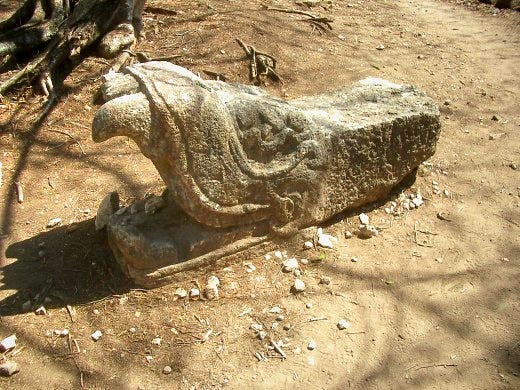





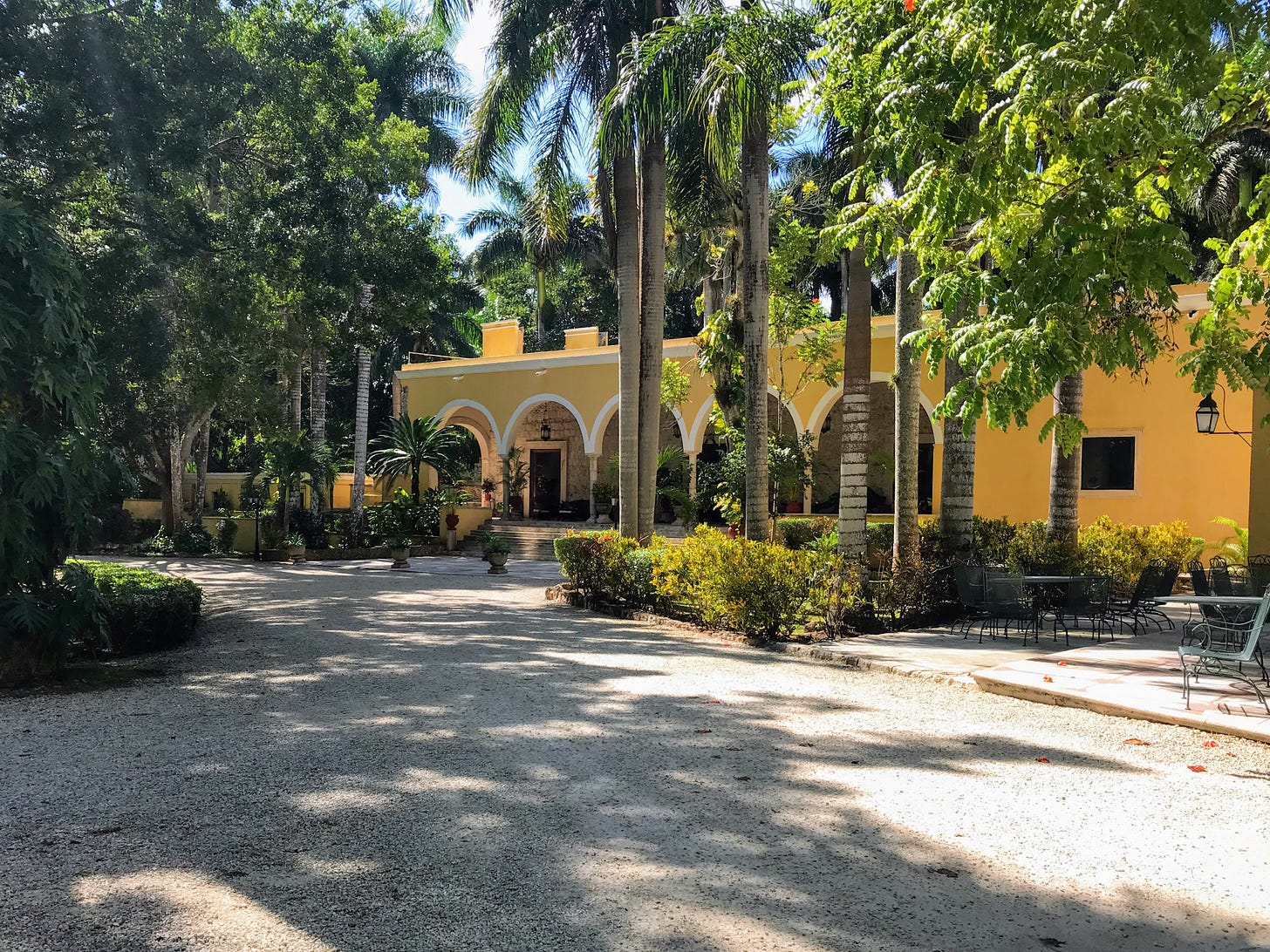
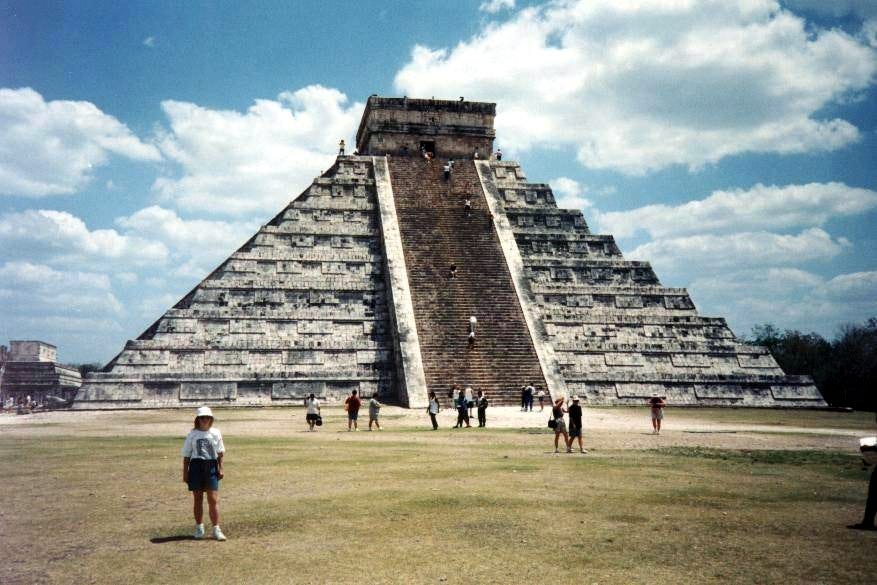
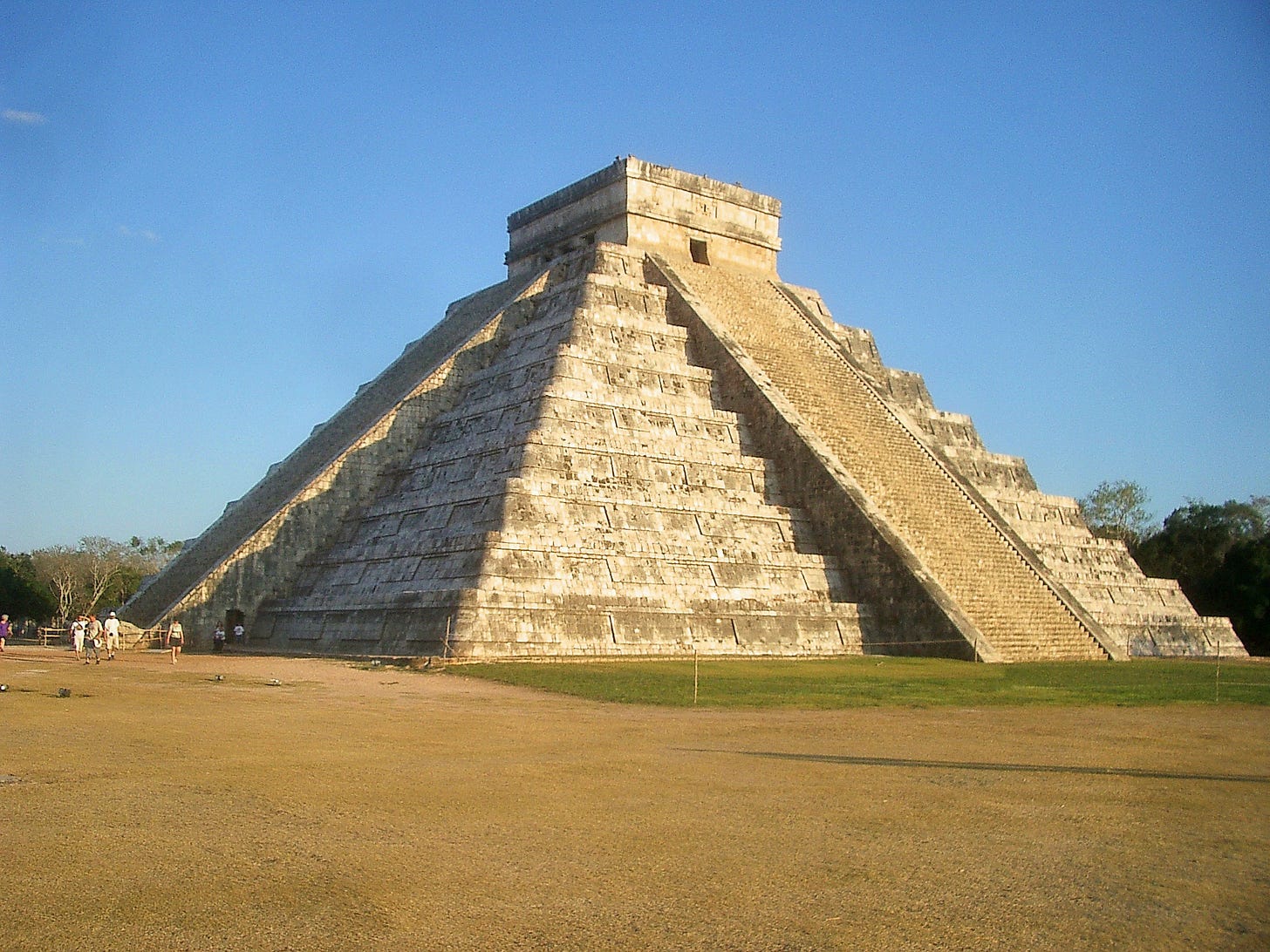
Cool history! I don’t remember if I learned any of that on my tour a few years back
Your images of the snake is far better (and easier to understand) than what our guide showed us. Now it makes sense! 😂